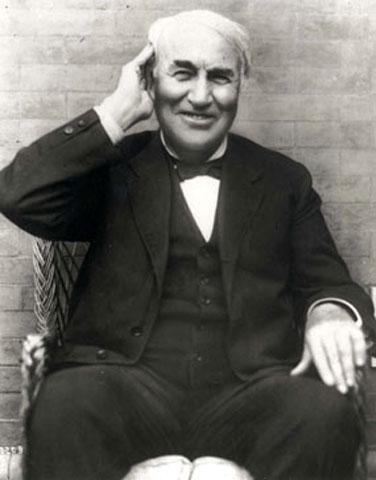Thomas Edison's inventions changed the world, and starting on October 10th you'll be able to tour his laboratory complex at Thomas Edison National Historical Park in New Jersey. Key areas, including Edison’s private laboratory, original music recording studio and a photography studio will open to the public for the first time in the history of the site.
It would be hard for most Americans alive today to imagine life without recorded music, movies or electric lighting, and those are only a few of Edison's contributions to technology. The inventor earned 1,093 United States patents, a record number for one person that still stands. Beginning October 10th you can visit the impressive laboratory complex in West Orange, New Jersey, where Edison worked from 1887 until his death in 1931.
A park publication describes the site and the new visitor experience that will be available beginning next month:
The Laboratory Complex includes fourteen historic structures, six of which were built in 1887 as the first laboratory dedicated to the “business of inventing.” Many rooms contain their original furnishings. A replica of the world’s first motion picture studio, the “Black Maria,” is also part of the park.
There are now many ways to experience the Laboratory Complex. In addition to National Park Service Ranger guided programs, new exhibit panels with plasma display screens have been placed throughout Building 5, the main laboratory building. Many of these exhibits showcase the historic photographs and films from the collection.
An optional self-guided audio tour is also available in English, Spanish, German, and Japanese. Using music and oral histories from the archival collection, as well as interviews with historians, curators and archivists, the recorded tour provides an in-depth look at the laboratory complex. A special children’s audio tour is also available.
A variety of special programs and events will be held as part of the grand opening October 10 through 12.
“This is your opportunity to be among the first visitors to walk through the Main Street gate and explore the new site,” said Greg Marshall, Superintendent at Thomas Edison National Historical Park.
"The original furnishings have been moved back into many rooms and the vast and unique museum collections will be available for all to see, hear, and experience. Installation of a new elevator and stair tower adjacent to the main laboratory building allows new public access to the upper floors of the laboratory that now feature new exhibits."
Festivities will be at the Laboratory Complex on Main Street and the Glenmont Estate in Llewellyn Park from 9:00 a.m. until 5:00 p.m. each day with extended hours on Saturday until 8:00 p.m.
All of these events are free of charge, and you'll find directions to the park here.
The park's museum collection is either a dream come true or a nightmare for a curator. The collection includes:
fourteen (14) historic structures, six of which were built in 1887 as the first laboratory dedicated to the “business of inventing.” Many rooms contain their original furnishings. The museum collections encompass over 400,000 artifacts including everything from prototype and commercial Edison products, to laboratory furnishings and equipment, to personal items used by the Edison’s in their home.
The Edison Archive includes an estimated five million documents, 48,000 sound recordings, 10,000 rare books, 3000 laboratory notebooks and 60,000 photographic images.
Edison's story is an inspiring one. He refused to be hampered by a serious hearing impairment and "it seems that Edison saw advantages to being deaf… he said that it helped him concentrate on his work."
Edison had very little formal education as a child, attending school only for a few months because his teachers thought he was very slow. He was taught reading, writing, and arithmetic by his mother, but was always a very curious child and taught himself much by reading on his own. He never attended any technical school, college or university.
Edison did more than invent… Edison could think of ways to make a better phonograph, for example, build it with his muckers [his assistants], have them test it and make it work, then manufacture it in the factories that surrounded his laboratory. This improved phonograph could then be sold throughout the world. Historians have called the research and development laboratory Edison's greatest invention.
Not only did Edison improve the phonograph several times, but he also worked on X-rays, storage batteries, and the first talking doll. At West Orange he also worked on one of his greatest ideas: motion pictures, or "movies." The inventions made here changed the way we live even today.
A visit to the park can also include a tour of Glenmont, the Edison estate which is located about one-half mile from the lab complex. If you'll be in the area before October 10, the Glenmont site is already open to the public.
The Edison home at Glenmont, a twenty-nine (29) room brick and timber mansion built in 1880, contains the original furnishings and family items used by Thomas and Mina Edison. The fifteen (15) acre estate includes gardens, the family greenhouse and barn, and the Edison poured concrete garage containing the family’s automobiles.
Check the park website for hours of operation and other information to help plan a visit.




Add comment